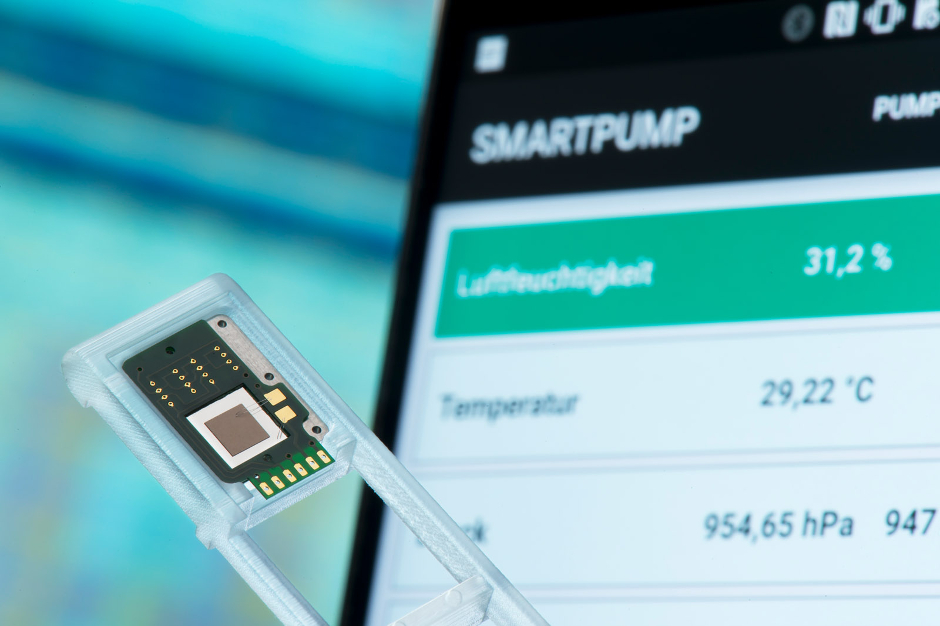
A smartphone with an inbuilt gas sensor could be used to warn of heavy exposure to particulate matter, which is harmful to the heart and lungs. To help the sensor respond quickly and provide accurate measurements, Fraunhofer researchers have developed a powerful micro diaphragm pump for delivering ambient air to the sensor.
“Our smart pump measures only 25 square millimetres, making it the world’s smallest pump. That said, it still has a high compression ratio,” said Dr Martin Richter, department head of micro dosing systems at the Fraunhofer Research Institution for Microsystems and Solid State Technologies EMFT in Munich.
Richter and his team used the piezoelectric effect to convert an applied electrical field into mechanical strain to generate pressure in the pump chamber. Alternating the voltage helps move the silicon membrane up or down, which draws ambient air through a valve and compresses it in the pump chamber before expelling it.
Conventional micro diaphragm pumps powered by piezoelectricity generate relatively low pressure with air. According to the group, the asymmetry of the piezo effect means a lot of room is required in the pump chamber to move the membrane. This results in a high volume of residual gas within the chamber, an issue that was resolved by Richter and his team.
“We use the piezo effect to specifically preload the diaphragm when assembling the piezoceramic," said Richter. "The advantage of this is that we no longer need a deep pump chamber. This…enables us not only to build micropumps with high compression ratios but also to make them smaller in size.”
The flap valves and the pump chamber are also made of monocrystalline silicon, which is said to offer benefits over metals and plastics. For example, the metalloid – which is also used to make solar cells and computer chips – is pliable and fatigue-free. Similarly, the individual pump components can be etched from the silicon layer with a high degree of precision and subsequently joined together.
However, its disadvantage is the relatively high cost of silicon, which is why it is importance to make the micropump as small as possible. “Our goal is to reduce the size of the pump to 10 square millimetres to make its mass production profitable. We are well on track to achieving this,” Richter said.
Currently, what makes it even more difficult to integrate gas sensors into smartphones is the fact that reaction times for these sensors are too long. The smart micropump would be able to deliver air specifically to the gas sensors, which would reduce the reaction time from several minutes to just two seconds.
https://www.theengineer.co.uk/fraunhofer-pioneers-new-cfrp-production-process/




Glasgow trial explores AR cues for autonomous road safety
They've ploughed into a few vulnerable road users in the past. Making that less likely will make it spectacularly easy to stop the traffic for...